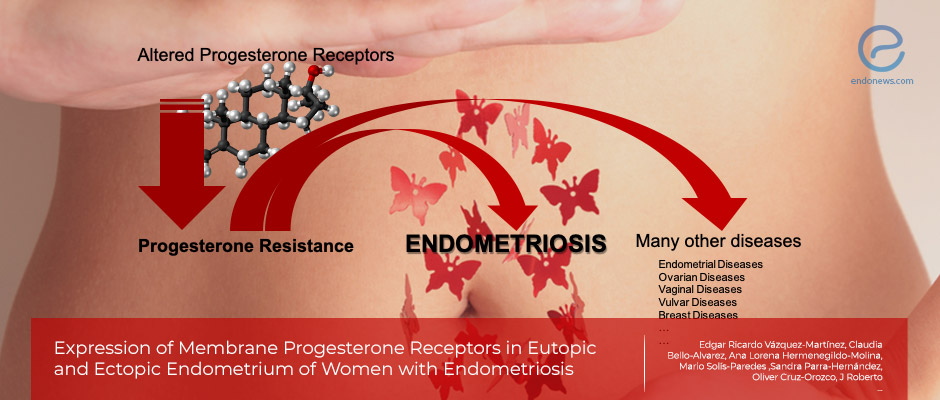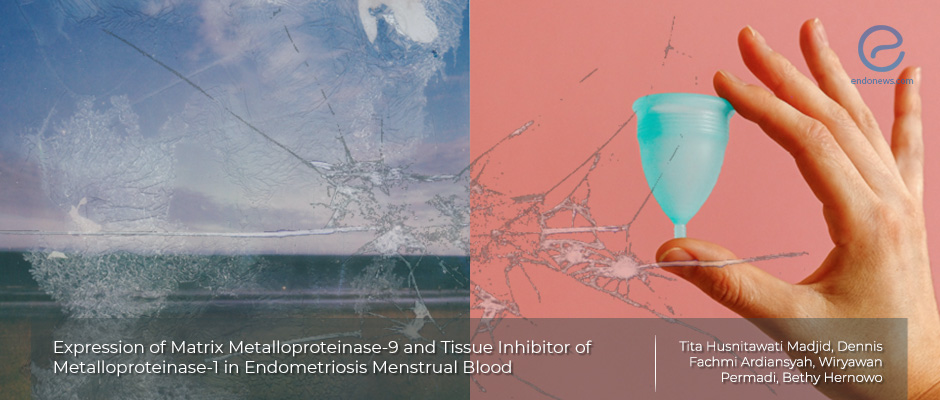 Ellen Tumimbang, PhD
Ellen Tumimbang, PhD
I graduated with Ph.D. in Biochemistry from the University of the Philippines Los Baños, Philippines. My work experience focuses on molecular biology, biotechnology, genetics, and biochemistry with emphasis on plants.
What motivated me to write for Endonews? I had an up-close and personal experience with uterine disease. I am interested to understand the molecular mechanism behind the cause of abnormal thickening of the endometrial lining and consequently lead to cancer in some cases. My goal in writing is to be an advocate to deliver clearly and understandably the research articles on endometriosis to my friends who are suffering with the disease.
Oxidative stress, reactive products, detoxification, endometriosis and pain
Oxidative stress is one factor known to be involved in the pathogenesis, progression, and establishment of endometriosis in women. During oxidative stress, excess reactive oxygen species as a secondary by-product of lipid peroxidation and reactive aldehyde including 4- hydroxynonenal (4-HNE) are produced. In the peritoneal fluid of women with endometriosis, elevated reactive aldehyde levels and its accumulation can form protein adducts that can generate pain. One critical enzyme in detoxifying reactive aldehydes like 4-HNE is the mitochondrial enzyme ALDH2.…
Key Points Lay SummaryEndometriosis, Fatigue and Productivity
Fatigue is one of the prominent and distressing symptoms of endometriosis-associated with insomnia, depression, pain, occupational stress, and reduced health-related quality of life. Endometriosis-related fatigue causes significant impairments in workplace productivity and daily activities of women with endometriosis. Loss of productivity in the workplace imposes a steep societal economic burden. It is only recently that evaluation on endometriosis-related fatigue was performed in larger studies. The article “Impact of Endometriosis on Fatigue and productivity Impairment in a Cross-sectional survey of Canadian…
Key Points Lay SummaryWhy Persistent or Recurrent Endometriosis Happens? - Dan Martin, MD
The objectives of Dr. Martin in this presentation are to understand the difficulties in recognition of deep and hidden endometriosis, difficulties in recognition of small lesions of micron size, and differentiate the look-alike lesions of endometriosis. He addressed overcoming these difficulties by presenting the progress in research and clinical techniques in the detection of endometriosis and the prevalent occurrence of small lesions that are hardly detectable. In the 1970 and 1980s, diaphragm involvement was rare but now 3% of patients…
Key Points Lay SummaryA pilot study for Endometriosis Potential biomarkers
Endometriosis is one of the most common female health disorders typically causing dysmenorrhea, dyspareunia, and pelvic pain, and may contribute to infertility. It is necessary to identify potential molecular biomarkers for diagnosis and regulatory factors behind the disease. The study aimed to investigate gene-protein expression proteins like progranulin (GRN), neurogenic locus notch homolog protein (NOTCH3), fibronectin (FNI), and PTEN-induced kinase 1 (PINK1) that are known to be involved in inflammatory diseases, cell adhesion, and migration, implantation, cell development, or blastocyst…
Key Points Lay SummaryCA125 do not correlate with pain and its severity among adolescents
Cancer antigen 125 (CA125) is a high molecular weight glycoprotein expressed in tissue derived from the coelomic and Mullerian epithelia including the uterus endometrium. Previous studies reported that CA125 is the most studied endometriosis marker. Women with endometriosis experienced different levels of dysmenorrhea, non-cyclic/general pelvic pain, and dyspareunia. A few studies have tried to correlate the pain symptoms with biomarker levels. However, none of these studies examined the correlation between pain with biomarker levels in the adolescent population. The endometriosis…
Key Points Lay SummaryNon-coding RNAs and Endometriosis
Non-coding RNAs may have a fundamental role in the development of endometriosis. Non-coding transcripts have regulatory roles in the expression of protein-coding genes, thus regulate several signaling pathways. Based on their length, these non-coding RNAs are classified into two main classes: Long non-coding RNA (lncRNAs) and microRNAs. MicroRNA is either located in the cytoplasm and acts as a critical regulator of gene expression by binding to its targets, or guides the transcriptional regulation of genes in the nucleus. On the other…
Key Points Lay SummaryPain and Quality of Life Following Surgical Treatment for Endometriosis
Currently, laparoscopy is the preferred approach as a surgical treatment of endometriosis. Many studies have shown the effectiveness of laparoscopic surgery to reduce the painful symptoms and improve the quality of life for patients with endometriosis in the short term and long-term period. It was reported that surgical treatment globally reduced the symptom of pain and improve the quality of life as early as six months after surgery and even maintained in the long-term period. The study by Comptour et…
Key Points Lay SummaryEndometrium and HOXA 10 gene
Homeobox genes are transcription factors containing a conserved DNA sequence that encodes homeodomain which has a helix-loop-helix-turn structure. The homeodomain is responsible for recognizing and binding specific DNA sequences to regulate the expression of target genes. There are at least 39 HOX genes arranged in 4 clusters designated as HOXA, HOXB, HOXC, and HOXD in mice and humans. Hox gene expression is well characterized in the adult female reproductive tract. Among the four HOX clusters, the HOX-A cluster is…
Key Points Lay SummaryProgesterone Receptors and Endometriosis.
Endometriosis is characterized as a chronic and inflammatory disease in which the specific cause has not been completely understood. Nonetheless, altered estrogen signaling and progesterone resistance are the common attributes of endometriosis. Progesterone resistance is partly attributed to a decrease in the expression of the intracellular progesterone receptors in the ectopic endometrium. Progesterone function is mediated by membrane progesterone receptors (mPRs), which are G-protein-coupled receptors that encoded by five different genes PAQR7 (mPRα), PAQR8 (mPRQβ), PAQR5 (mPRγ), PAQR6 (mPRδ), and…
Key Points Lay SummaryEnhanced local and systemic inflammatory cytokine mRNA expression in women with endometriosis
Endometriosis is not only characterized by the implantation of endometriotic tissue outside of the uterine cavity but also necessitates an impaired immune response. It is suggested that abnormal immunological mechanisms causing the dysfunction of immune cells and their mediators are involved in the development of endometriosis. In the absence of appropriate immune control, the ectopically disseminated endometrium continues to lodge, proliferate, and invade the underlying tissue forming endometriotic lesions that grow under the hormonal influence of the menstrual cycle. Cytokines…
Key Points Lay SummaryHormone Control Related Genes in Women With Endometriosis
Endometriosis is an estrogen-dependent disease. The development of endometriosis is stimulated by the specific ability to receive the estrogen that is needed for growth and differentiation of endometrial cells and has numerous biological functions in eutopic and ectopic endometrium. Estrogen is produced from testosterone and androstenedione by the action of enzyme P450 cytochrome aromatase, which is the product of the gene CYP19A1 gene. The target cells can receive estrogen through estrogen receptors, ERα and ERβ encoded by the genes ESR1…
Key Points Lay SummaryCancer-associated mutations and endometriosis
Endometriosis is thought to benign gynecological disease. However, recent studies compiled in this review paper suggest that spontaneous somatic mutations are driven to occur during the cyclic bleeding resulting in endometriosis tissue undergoing repeated tissue injury and repair. Mutations are permanent and irreversible changes in the nucleotide sequences, generally caused by replication error, aging, exposure to cancer-causing agents, overproduction of estrogen, oxidative stress, etc. Cancer driver mutations called CAMs can arise from a replicative error on genes important in pathways…
Key Points Lay SummaryMenstrual Blood Proteins for Endometriosis Diagnosis
Endometriosis is a gynecological disorder characterized by endometrial tissue outside the uterine cavity. The backflow of menstrual blood from the uterus through the fallopian tubes is thought to be the cause of endometrial tissue growing outside the uterine cavity when it was first described. The breakdown of the extracellular matrix tissue by proteolytic enzymes is a prerequisite to endometrial tissue implantation. Matrix metalloproteinases are proteolytic enzymes that play a role in degrading the basement membranes of the endometrium during the…
Key Points Lay Summary











